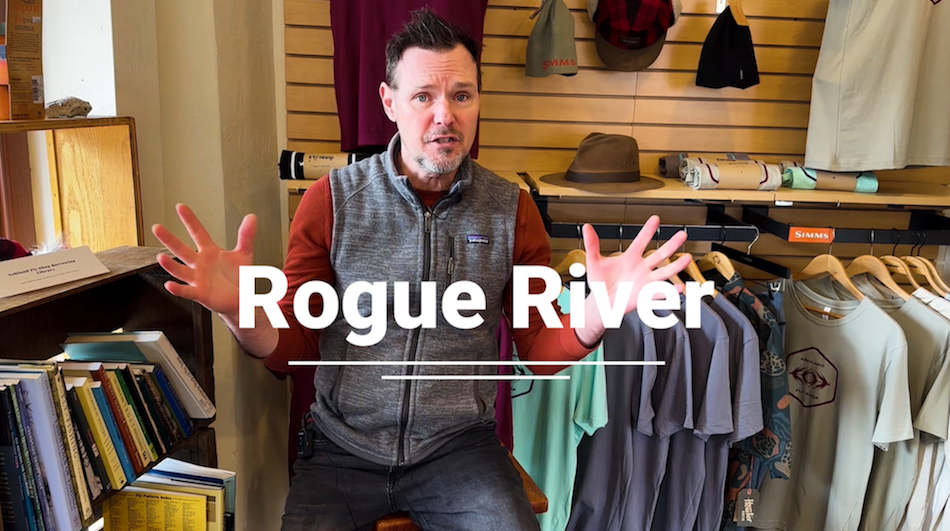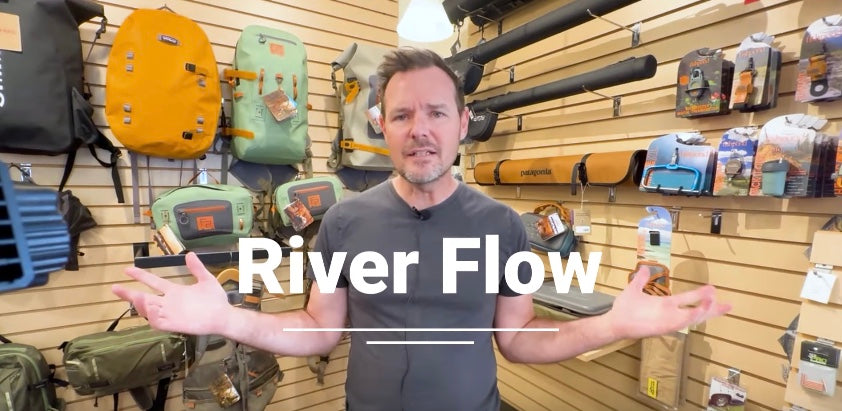Your Cart is Empty
free shipping on all domestic orders over $75

Often, I get inspired to write about casting after a lesson. The Spey Casting Equation was a result of that. Recently I had a lesson with one of my regular guys. The focus, you guessed it, was the Single Spey. There are several variations of the Single Spey. Most differ in the first part, the Lift. I have played around with several lift variations over the years, like the Shotgun Lift and the Crescent Lift. They both work just fine when done properly.
More recently I have bonded with the cleaner and somewhat simpler style of the Single Spey, which I would describe as a long line/tournament style. I was introduced to this method over the past several years by my Spey bro Charles St. Pierre. I don’t claim to be a long line expert and rarely cast them. But, every year Charles brings his big sticks to the Sandy Clave and he gives me my annual long line tune-up. The technique he uses is the self-described long line/tournament style, and I have to say, it works! I use a more compact version of it for short head lines, like Scandis. This is now the version I teach to everyone.
Here’s how it works:
The Lift (from river left): Start with your feet pointed at your target (typically quartering downstream). Rotate your hips straight downstream. Hold the rod so that your bottom hand is outside your left hip, palm down. Your top hand grips the upper part of the cork, palm up. Relax your shoulders so that your arms hang almost limp. Do a 2/3 bicep curl with your right arm and 2/3reverse bicep curl with your left arm (palm stays down). At the completion of the lift, your top hand will be slightly higher than the bottom hand, as will the rod tip. Initiate the Dish.


The Dish: From the top of the Lift, SLOWLY rotate your hips and square them to the target, with your hands and rod tip on the same plane they started from. Once square to your target, lift your top hand and push out your bottom hand to the Key Position. In doing this, the D-Loop forms and Anchor splashes down simultaneously.
The Key Position: This is your casting position. With shorter lines, your top hand should be about cheek level. With longer lines, your top hand will drift up and back prior to firing the Forward Cast.


Forward Cast: From the Key Position, pull both hands straight down, bottom hand slightly curving towards your belt, with both hands stopping at the same time. Finish your cast with a smooth acceleration to its stop, with your rod tip stopping at 10 o’clock.

Notes: Once you get the basic parts of the cast dialed, the key to executing a good cast is smooth transitions between the parts. For example, once you get to the top of the lift, don’t pause, but immediately start the Dish.
The height of the Lift is relative to the length of the rod, line, wading depth, and so on. It takes some experimentation and adjustment to dial it in.
The speed of the Dish (hip rotation/D-Loop Stroke) is also relative to the above variables. But, in general a starting slow and staying connected is the key.
Perfect anchor placement and D-Loop formation is attained when the Height of the Lift and Speed of the Dish “meet on a curve”. Again, you have to find that sweet spot based on the above variables while making the proper adjustments. Also, pushing out the bottom hand as you move into the Key Position is secret to Anchor placement and D-Loop formation. This is done at the completion of the Dish, as your top hand swivels to the Key Position.

The line doesn’t release from the water at the top of the Lift, but about a third or half way through the Dish. Therefore, you have to maintain the same speed and stay connected with the line up to that point, and wait to apply power into the D-Loop once the rod has reached the halfway point of the Dish, at which point your rod will be pointing at your target. Years ago, while watching Simon Gawesworth make a 180 degree Single Spey (from downstream to upstream), he emphasized the importance of when and where to apply the power into the D-Loop. In order to pull that off, he had to maintain contact with throughout a long Dish, and once his hips, shoulders, and rod got square to his target, he applied power into the D-Loop (opposite the target) and finished the cast. This is the epitome of the 180 Degree Rule.
Staying on plane during the Dish is critical for a clean Anchor splash down. Any dip in the Dish stroke will result in a crumpled anchor and a poorly shaped D-Loop. As you rotate your hips and torso around to the Key Position, if your hands remain where they stopped at the top of the Lift, this will create a nice, flat plane, and your rod and line will follow. In doing this, you will see the bottom of your line travel almost parallel to the water as is moves to the anchor point.

Final thoughts: With a little practice and experimentation, the Single Spey is a cast that you can approach with confidence. Stay relaxed, start slow, stay on plane, and let it fly. Adjust the height and speed of your Lift and Dish accordingly, and your cast will become more consistent and successful. It’s time to stop being scared of the Single Spey!

A February fishing report from Will, covering current and upcoming river and weather conditions on the Rogue, Applegate, Umpqua, and several rivers in northern California!

